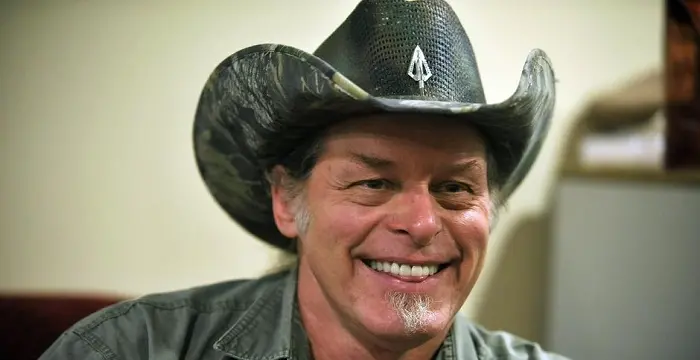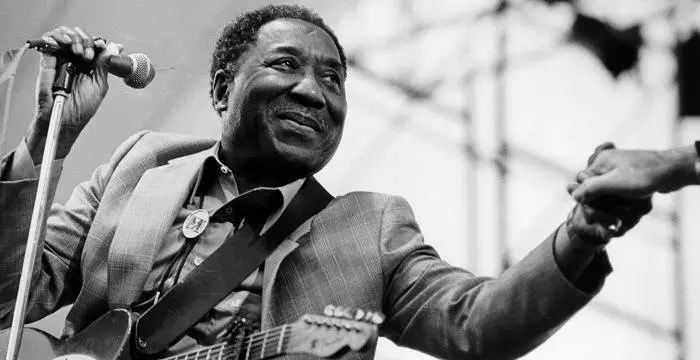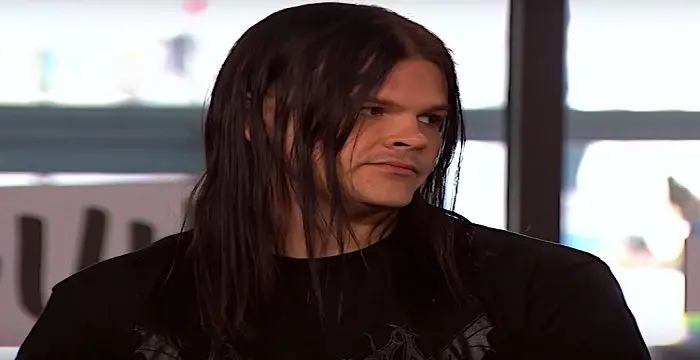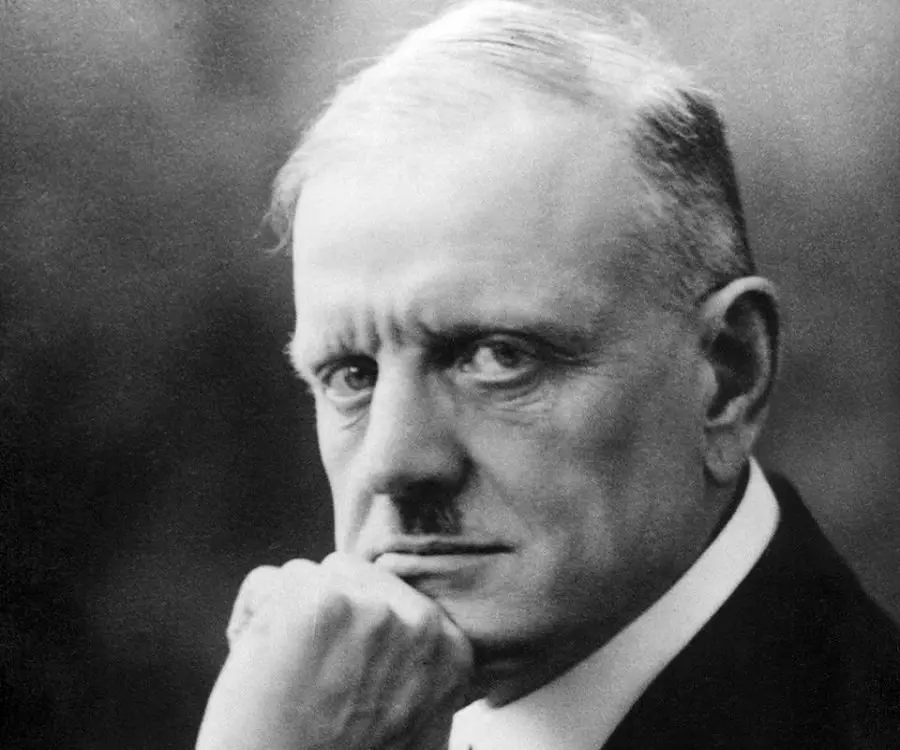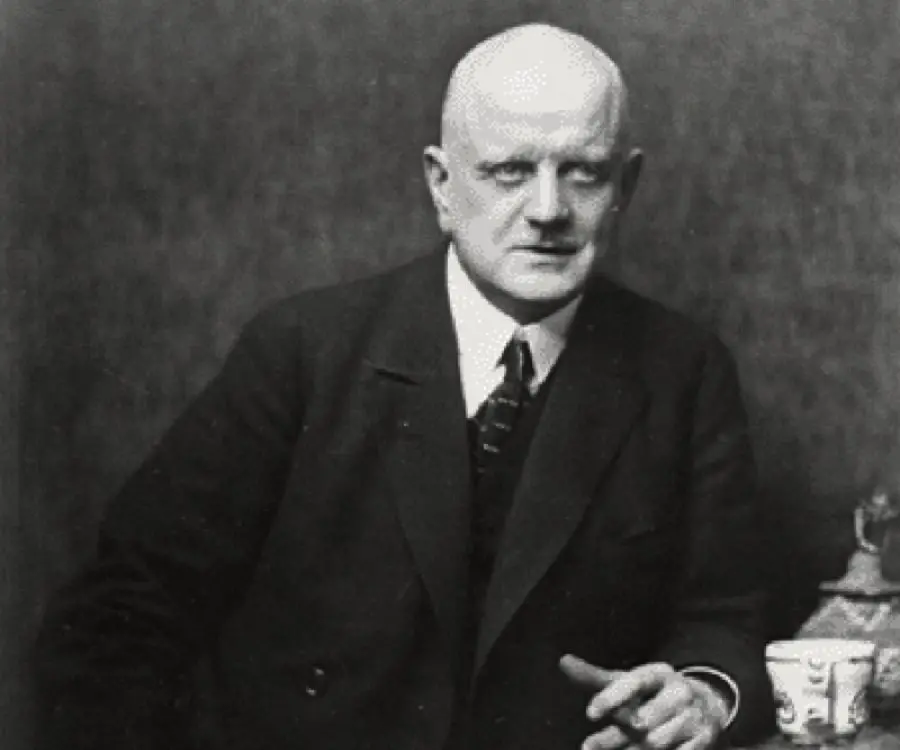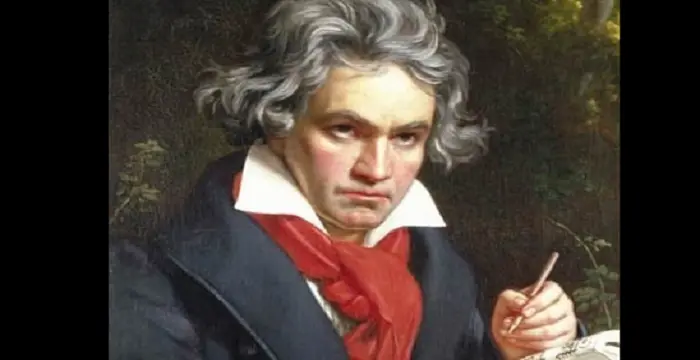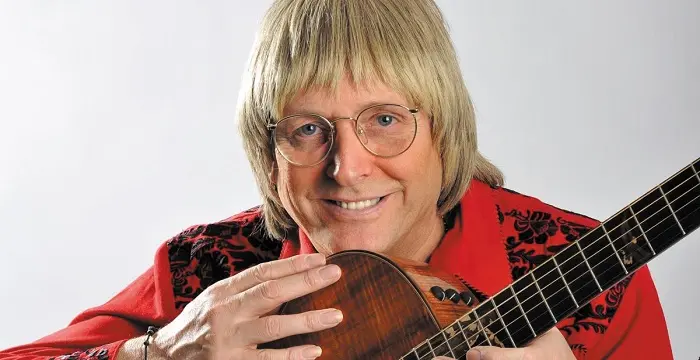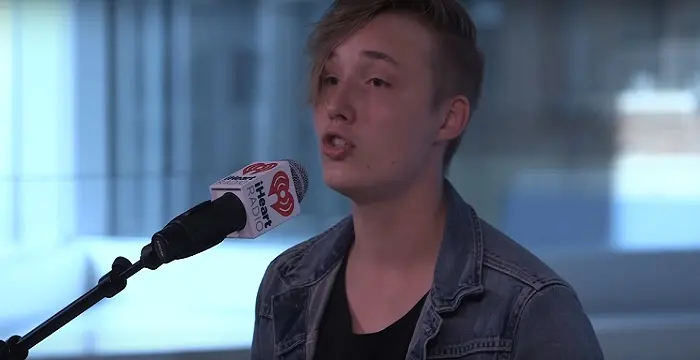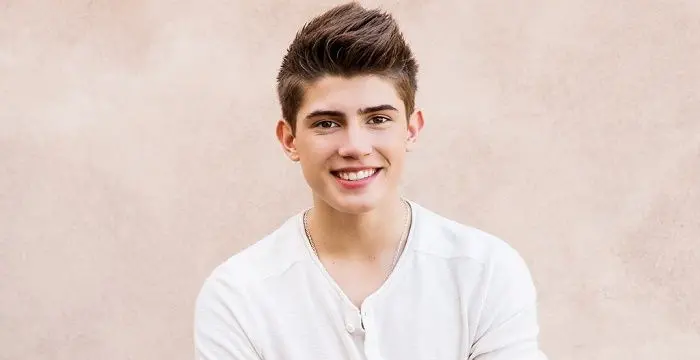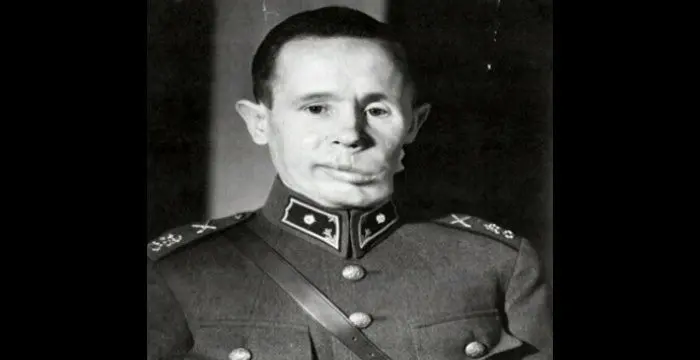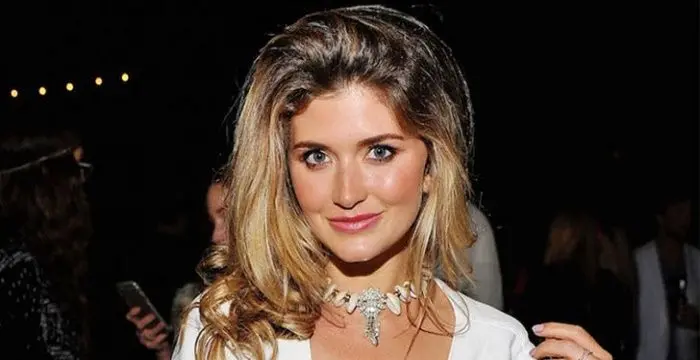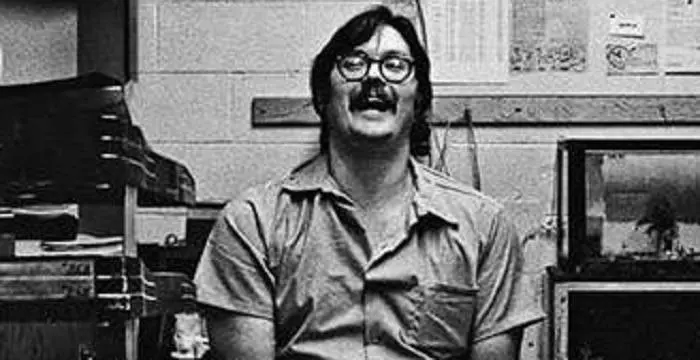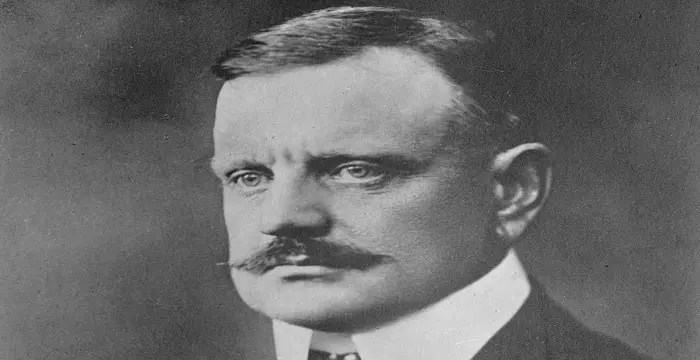
Jean Sibelius - Musicians, Career and Childhood
Jean Sibelius's Personal Details
Jean Sibelius was an eminent Finnish composer of the late Romantic and early-modern periods
| Information | Detail |
|---|---|
| Birthday | December 8, 1865 |
| Died on | September 20, 1957 |
| Nationality | Finns |
| Famous | Musicians, Composers |
| Spouses | Aino Sibelius |
| Siblings | Christian Sibelius, Linda Sibelius |
| Childrens | Eva, Heidi, Katarina, Kirsti, Margareta |
| Universities |
|
| Birth Place | Hämeenlinna, Finland |
| Gender | Male |
| Father | Christian Sibelius |
| Mother | Maria |
| Sun Sign | Sagittarius |
| Born in | Hämeenlinna, Finland |
| Famous as | Composer |
| Died at Age | 91 |
// Famous Musicians
Ted Nugent
Ted Nugent is a hard rock musician known for his hits ‘Stranglehold’ and ‘Cat Scratch Fever’. This biography of Ted Nugent provides detailed information about his childhood, life, achievements, works & timeline.
Muddy Waters
Muddy Waters was a blues musician referred to as the 'father of modern Chicago blues.' Check out this biography to know about his childhood, family life, achievements and fun facts about him.
Travis Bacon
Travis Bacon is an American musician and actor, better known as the son of veteran actors Kevin Bacon and Kyra Sedgwick. Find more about his family, birthday, etc.
Jean Sibelius's photo
Who is Jean Sibelius?
Jean Sibelius was an eminent Finnish composer of the late Romantic and early-modern periods, widely regarded as Finland’s greatest composer of all time. Having lost his father at the age of three, he was brought up in his maternal grandmother’s home and was sent to a Finnish language grammar school where he came across Finnish literature. Thereafter, he was sent to Helsinki to study law, but abandoned it within one year to study music at the Helsinki Music Institute. Although his initial ambition was to become a violin virtuoso, he soon realized that he had started on violin too late in life. Instead, his teacher advised him to become a composer and in time he became Finland’s greatest composer. With his music, he helped his homeland develop a national identity during its struggle for independence from Russia. Although the core of his oeuvre is made up of his seven symphonies, he is equally known for his many patriotic pieces such as his tone poem ‘Finlandia’ and his works based on the Finnish mythological epic, ‘Kalevala.’
// Famous Composers
Ludwig van Beethoven
Ludwig Van Beethoven was one of the greatest composers the world has ever had. Check out this biography to know about his childhood, family life, and achievements.
Emina Jahović
Emina Jahović Sandal is a Serbian model, actress and singer-songwriter. Know more about her childhood, life, career, achievements and timeline in this biography.
John Denver
John Denver, a famous American singer-songwriter and activist, is remembered for songs like Take Me Home, Country Roads and Annie's Song. To know more about his childhood, career, profile and timeline read on
Childhood & Early Life
Jean Sibelius was born on 8 December 1865 in the small garrison town of Hämeenlinna, then under the Grand Duchy of Finland. His birth name was Johan Julius Christian Sibelius; but at home, he was called Janne, which he later changed to Jean and thus became known as Jean Sibelius.
His father, Christian Gustaf Sibelius, was a Swedish-speaking military doctor. His mother was Maria Charlotta Sibelius née Borg. Janne was born second of his parents’ three children, having an elder sister named Linda and a younger brother, Christian.
Christian Gustaf was of bohemian nature and therefore, when he suddenly died from typhoid in July 1868, he left nothing but unpaid bills. His mother, then pregnant with their third child, sold their home and moved in with her own widowed mother, Katarina Borg, who also lived in Hämeenlinna.
Thus from childhood, Janne was brought up mostly in female company with only an uncle, Pehr Ferdinand Sibelius, providing him with some male influence. Pehr later became a father figure to him and also his music advisor.
Pehr, who also played the violin, was quick to recognize the young boy’s aptitude for music and encouraged him in this. As Janne turned seven, he had ‘Aunt Julia’ brought in as his piano teacher.
She must have been a strict teacher for whenever he made a mistake, he would receive a rapping on the knuckle and to avoid that, he started improvising. Nonetheless, very soon he learned to read music.
In 1874, Janne started his formal education at Lucina Hagman's Finnish-speaking preparatory school. In the following year, as he turned ten, he received a violin from uncle Pehr. However, he did not have any formal training in the instrument until he was fifteen.
In 1876, Janne was admitted to Hämeenlinnan normaalilyseo, a newly founded Finnish language grammar school. However, he did not seem to enjoy schooling and despite doing quite well in mathematics and botany, he was found to be absentminded.
At the same time, it was at this school that he was first introduced to Finnish literature and came in contact with the Finnish mythological epic, Kalevala. Until his death, the epic remained a constant source of inspiration for him.
At home, the three siblings often participated in trios with Janne playing the violin, Linda, the piano, and Christian, the cello. Encouraged by uncle Pehr, Janne also started writing music and from 1880 to 1885, produced some fifteen compositions for two to four players.
His earliest recorded composition dates back to 1881, when he wrote on paper Vesipisaroita viululle ja sellolle ('Vättendroppar; Waterdrops for violin and cello'). Although it might have been just a musical exercise, it demonstrates his early know-how on classical composition.
Also in 1881, he started taking violin lessons from the local bandmaster, Gustaf Levander. Very soon, he became an accomplished player and set his heart on becoming a great violin virtuoso.
Another important influence during his childhood was his summer trip to Loviisa. It was here that he learned to appreciate nature and enjoy freedom. It was also the place where a future symphonic poet was born.
Making of a Composer
In the autumn of 1885, after passing his school leaving examination, Janne Sibelius enrolled at the Imperial Alexander University in Finland, today known as the University of Helsinki, to study law. Concurrently, he also enrolled at the Helsinki Music Institute, now the Sibelius Academy, to study music.
Initially, he tried to pay equal attention to law and music, but soon started neglecting the former. In the autumn of 1886, despite his family’s opposition, he abandoned law to concentrate fully on music.
At the Music Institute, studying under the Institute’s director Martin Wegelius, he had his first formal lesson in composition. Although violin playing still remained his life’s ambition, he soon realized that he had started late on the violin and therefore concentrated on composition.
Thereafter, under the direction of Martin Wegelius, he began to compose chamber and instrumental music. During this period, he is said to have composed more than one hundred pieces, among which, the ‘Violin Sonata in F’ and ‘String Quartet in A minor’ are two of his most significant works.
Apart from Wegelius, his piano teacher, Ferruccio Busoni, with whom he developed a lifelong friendship, also influenced him greatly. Sometime during this period, inspired by one of his long departed seafaring uncles, he changed his name to French-sounding Jean. That it sounded more professional was another reason for it.
Going Abroad
Jean Sibelius studied at the Helsinki Music Institute till 1889. Thereafter in the same year, on the advice of Wegelius, who wanted his student to receive strict German training, he moved to Berlin and began to study counterpoint with Albert Becker.
Here for the first time, he had the opportunity to attend a variety of concerts and operas. Among them, Finnish composer Robert Kajanus conducting his symphonic poem ‘Aino’ influenced him most. It is said to have inspired Sibelius to use the epic poem ‘Kalevala’ as a basis for his composition later in life.
In 1890, after studying with Becker for one year, Sibelius moved to Vienna. Here he studied with composers Robert Fuchs and Karl Goldmark. Fuchs taught him Hugo Wolf and Gustav Mahler while from Goldmark he learned to handle orchestra.
So far Jean Sibelius had mainly concentrated on chamber music composition. Now under Goldmark’s guidance, he began to work on orchestra and composed ‘Overture in E major’ and the ‘Scène de ballet.’
This was also the time, when he started being aware of his Finnish identity and almost immersed himself in the study of ‘Kalevala.’ It led to the composition of ‘Kullervo Symphony’, a work he started in Vienna, but finished in Helsinki.
Returning Home
Jean Sibelius returned to Finland in the summer of 1891. Here he continued working with ‘Kullervo’, which was premiered on 28 April 1892 in Helsinki with resounding success, and with it Sibelius became a well-known name in Finland. However, his struggles did not end there.
In 1892, to meet his expenses, he was forced to take teaching assignments at two different institutes. This left him with very little time for composing. Yet, he continued to work and on 16 February 1893, he had his first version of ‘En Saga’ presented in Helsinki.
Because it was too long, it was not as well-received as had been expected. Then in March, he had three more performances of the ‘Kullervo Symphony’, but they too failed to be appreciated.
Success came finally in April 1893 with the premiere of his choral work ‘Väinämöinen's ‘Boat-ride’. ’Vårsång’, composed in 1894, is another of his well-known works of this period. Slowly, he began to gain acceptance as a leading composer in Finland.
In 1894-1895, his works like ‘En saga’, ‘Karelia’ and ‘Vårsång’ were part of at least 16 concerts in Helsinki. His 1895 work, ‘The Lemminkäinen Suite’, also called ‘Four Legends from the Kalevala,’ earned him considerable fame. Yet, financial problems kept on troubling him.
Respite came when in 1898 he was awarded a substantial annual pension by the Finnish Senate. Initially, it was granted for ten years, but later was extended for life. The financial security enabled him to complete the music for Adolf Paul's play ‘King Christian II,’ performed on 24 February 1898.
Becoming a National Hero
At that time, the Grand Duchy of Finland was an autonomous unit under the Russian Empire. On 15 February 1899, Emperor Nicholas II started a campaign on ‘Russification of Finland’, aiming to terminate the political autonomy and cultural uniqueness of the region. The people of Finland were naturally agitated by it.
Meanwhile in 1898, Sibelius had started writing ‘Symphony No. 1 in E minor’, which he finished it in early 1899. When it was premiered on 26 April 1899 by the Helsinki Philharmonic Orchestra, it was well-received by all.
Along with the ‘Symphony’, the program also premiered his ‘Song of the Athenians’ for boys and male choirs. It was a blatantly patriotic piece and more compelling than any other. The nation, already charged with patriotism, made him a national hero.
‘Finlandia’ written in 1899 as a covert protest against increasing Russian censorship was another of his cherished works. Premiered on 2 July 1900 in Helsinki, it was actually one of the seven pieces that accompanied a tableau that depicted parts of Finnish history.
His ‘Second Symphony’, premiered in Helsinki on 8 March 1902 was also hailed with tremendous enthusiasm and marked as an absolute masterpiece. Written at a time when the Finnish language and culture was under threat, it was popularly dubbed as ‘Symphony of Independence.’
International Fame
Meanwhile, in the spring of 1900, Sibelius, along with Kajanus, went on a tour of thirteen European cities, where he presented his recent works. Everywhere, his work was highly appreciated, making him internationally famous.
Returning home, he started working on a new shorter version of ‘En Saga.’ The work, premiered in Berlin in November 1902, firmly established his reputation in Germany.
Subsequently, from 1903, he began to spend more time at Helsinki, while his family lived in the country. Alone in the city, he began to indulge in excessive wining and dining, running huge bills at restaurants, a trait he might have inherited from his father.
Nonetheless, he continued working, composing a number of master pieces and conducting operas and concerts. In 1907, he moved away from the romantic intensity which marked his earlier works, to write ’Symphony No 3 in C Major’ and with that began a new chapter in his creative life.
Meanwhile, his drinking and smoking had not only become life threatening for him, but also had such a disastrous effect on his wife’s health that she had to be hospitalized. He then promised to give up these vices. In 1908, he also had to undergo a throat operation to remove a tumor.
However, the situation improved by 1909. That year he toured Great Britain, where his concerts were received with enthusiasm. Thereafter, he wrote a number of pieces, including the ‘Fourth Symphony’ (1910) and ‘The Bard’ (1913) and went on musical tours to Sweden, France, USA and Germany.
First World War & Thereafter
As the First World War set in, his royalties from abroad were stopped. Jean Sibelius was now forced to write smaller pieces for publication in Finland in order to make ends meet.
The ‘Fifth Symphony’, which the Finnish Government commissioned him to write in the honor of his own 50th birthday, was the most significant work of this period. Originally composed in 1915, the piece was revised first in 1916 and then again in 1919.
Two other significant works of this period were ’The Oceanides’ (1913-1914) and ‘Jäger March’ (1917). The later became especially popular when in December 1917 the declaration of independence was accepted by the country’s parliament.
From 1919, Sibelius resumed his foreign tours, visiting Copenhagen in the same year and England and Norway in 1921. At the same time, he continued composing, producing ‘Hymn of the Earth’ in 1920, ‘Sixth Symphony’ in 1922 and ‘Seventh Symphony’ in 1924.
Later in 1925, he wrote the incidental music for a production of Shakespeare's ‘The Tempest.’ His last major work was the tone poem ‘Tapiola’, written in 1926 on a commission from Walter Damrosch for the New York Philharmonic Society. It is also based on Finnish epic, ‘Kalevala.’
There are sufficient evidences that sometime in the 1930s he had written the ‘Eighth Symphony.’ But being the greatest critic of himself, he repeatedly refused to publish it.
In the 1940s, for unknown reasons, he burned down a substantial portion of his work, which might have included the ‘Eighth Symphony.’ His wife later recalled that Sibelius became more relaxed after this incident.
Major Works
Although his seven symphonies continue to be as popular as they ever were, Jean Sibelius is also remembered for his compositions like ‘Finlandia’, ‘Karelia Suite’, ‘Valse triste’, ‘Violin Concerto’, ‘Kullervo’, and ‘The Swan of Tuonela.’
Personal Life & Legacy
In the autumn of 1888, while studying music in Helsinki, Sibelius met Aino, the daughter of General Alexander Järnefelt, the governor of Vaasa, and fell in love with her. They got married on 10 June 1892 at Maxmo. The couple had six daughters: Eva, Ruth, Kirsti, Katarina, Margareta and Heidi.
In 1903, Sibelius had a house built on the shores of Lake Tuusulanjärvi in Järvenpää, 38 kilometers north of Helsinki. It became the family’s home and he called it Ainola, or the "Aino's place". Although he lived off and on in Helsinki for professional reasons, he spent the last years of his life in this house.
It was here that he died from brain hemorrhage on 20 September 1957. He was then ninety-one years old and was survived by his wife and five daughters. He was buried in the garden of the house.
In 1972, his five surviving daughters sold the house to the State of Finland. In 1974, it was turned into a museum, which now contains many of his personal artifacts including his grand piano.
Since 2011, his birthday is observed as ‘Flag Day’ and also as the ‘Day of Finnish Music.’
The International Jean Sibelius Violin Competition and the Sibelius Monument, located in Helsinki's Sibelius Park continue to carry his legacy. In addition, 1405 Sibelius, a stony Florian asteroid, has been named in his honor.
Trivia
On 20 September 1957, at the time of Sibelius’ death, his Fifth Symphony was being broadcast from Helsinki.
// Famous Finnish peoples
Isac Elliot
Isac Elliot is a Finnish pop singer-songwriter and dancer. Let’s have a look at his family & personal life including age, date of birth, girlfriends, net worth, and fun facts.
Robin
Robin Packalen is a Finnish teen pop artist. Check out this biography to know about his childhood, family, personal life, career, etc.
Simo Häyhä
Simo "Simuna" Häyhä was a Finnish sniper, considered the most deadly sniper in war history. Find more about his family, childhood, personal life, career, achievements, etc.
Jean Sibelius biography timelines
- // 1405The International Jean Sibelius Violin Competition and the Sibelius Monument, located in Helsinki's Sibelius Park continue to carry his legacy. In addition, 1405 Sibelius, a stony Florian asteroid, has been named in his honor.
- // 8th Dec 1865Jean Sibelius was born on 8 December 1865 in the small garrison town of Hämeenlinna, then under the Grand Duchy of Finland. His birth name was Johan Julius Christian Sibelius; but at home, he was called Janne, which he later changed to Jean and thus became known as Jean Sibelius.
- // Jul 1868Christian Gustaf was of bohemian nature and therefore, when he suddenly died from typhoid in July 1868, he left nothing but unpaid bills. His mother, then pregnant with their third child, sold their home and moved in with her own widowed mother, Katarina Borg, who also lived in Hämeenlinna.
- // 1874In 1874, Janne started his formal education at Lucina Hagman's Finnish-speaking preparatory school. In the following year, as he turned ten, he received a violin from uncle Pehr. However, he did not have any formal training in the instrument until he was fifteen.
- // 1876In 1876, Janne was admitted to Hämeenlinnan normaalilyseo, a newly founded Finnish language grammar school. However, he did not seem to enjoy schooling and despite doing quite well in mathematics and botany, he was found to be absentminded.
- // 1881His earliest recorded composition dates back to 1881, when he wrote on paper Vesipisaroita viululle ja sellolle ('Vättendroppar; Waterdrops for violin and cello'). Although it might have been just a musical exercise, it demonstrates his early know-how on classical composition.
- // 1881Also in 1881, he started taking violin lessons from the local bandmaster, Gustaf Levander. Very soon, he became an accomplished player and set his heart on becoming a great violin virtuoso.
- // 1884 To 1895In 1894-1895, his works like ‘En saga’, ‘Karelia’ and ‘Vårsång’ were part of at least 16 concerts in Helsinki. His 1895 work, ‘The Lemminkäinen Suite’, also called ‘Four Legends from the Kalevala,’ earned him considerable fame. Yet, financial problems kept on troubling him.
- // 1885At home, the three siblings often participated in trios with Janne playing the violin, Linda, the piano, and Christian, the cello. Encouraged by uncle Pehr, Janne also started writing music and from 1880 to 1885, produced some fifteen compositions for two to four players.
- // 1885In the autumn of 1885, after passing his school leaving examination, Janne Sibelius enrolled at the Imperial Alexander University in Finland, today known as the University of Helsinki, to study law. Concurrently, he also enrolled at the Helsinki Music Institute, now the Sibelius Academy, to study music.
- // 1888 To 10th Jun 1892In the autumn of 1888, while studying music in Helsinki, Sibelius met Aino, the daughter of General Alexander Järnefelt, the governor of Vaasa, and fell in love with her. They got married on 10 June 1892 at Maxmo. The couple had six daughters: Eva, Ruth, Kirsti, Katarina, Margareta and Heidi.
- // 1889Jean Sibelius studied at the Helsinki Music Institute till 1889. Thereafter in the same year, on the advice of Wegelius, who wanted his student to receive strict German training, he moved to Berlin and began to study counterpoint with Albert Becker.
- // 1890In 1890, after studying with Becker for one year, Sibelius moved to Vienna. Here he studied with composers Robert Fuchs and Karl Goldmark. Fuchs taught him Hugo Wolf and Gustav Mahler while from Goldmark he learned to handle orchestra.
- // 1891 To 28th Apr 1892Jean Sibelius returned to Finland in the summer of 1891. Here he continued working with ‘Kullervo’, which was premiered on 28 April 1892 in Helsinki with resounding success, and with it Sibelius became a well-known name in Finland. However, his struggles did not end there.
- // 1892 To 16th Feb 1893In 1892, to meet his expenses, he was forced to take teaching assignments at two different institutes. This left him with very little time for composing. Yet, he continued to work and on 16 February 1893, he had his first version of ‘En Saga’ presented in Helsinki.
- // Apr 1893Success came finally in April 1893 with the premiere of his choral work ‘Väinämöinen's ‘Boat-ride’. ’Vårsång’, composed in 1894, is another of his well-known works of this period. Slowly, he began to gain acceptance as a leading composer in Finland.
- // 1898 To 24th Feb 1898Respite came when in 1898 he was awarded a substantial annual pension by the Finnish Senate. Initially, it was granted for ten years, but later was extended for life. The financial security enabled him to complete the music for Adolf Paul's play ‘King Christian II,’ performed on 24 February 1898.
- // 1899 To 2nd Jul 1900‘Finlandia’ written in 1899 as a covert protest against increasing Russian censorship was another of his cherished works. Premiered on 2 July 1900 in Helsinki, it was actually one of the seven pieces that accompanied a tableau that depicted parts of Finnish history.
- // 15th Feb 1899At that time, the Grand Duchy of Finland was an autonomous unit under the Russian Empire. On 15 February 1899, Emperor Nicholas II started a campaign on ‘Russification of Finland’, aiming to terminate the political autonomy and cultural uniqueness of the region. The people of Finland were naturally agitated by it.
- // 1900Meanwhile, in the spring of 1900, Sibelius, along with Kajanus, went on a tour of thirteen European cities, where he presented his recent works. Everywhere, his work was highly appreciated, making him internationally famous.
- // 1902Returning home, he started working on a new shorter version of ‘En Saga.’ The work, premiered in Berlin in November 1902, firmly established his reputation in Germany.
- // 8th Mar 1902His ‘Second Symphony’, premiered in Helsinki on 8 March 1902 was also hailed with tremendous enthusiasm and marked as an absolute masterpiece. Written at a time when the Finnish language and culture was under threat, it was popularly dubbed as ‘Symphony of Independence.’
- // 1903Subsequently, from 1903, he began to spend more time at Helsinki, while his family lived in the country. Alone in the city, he began to indulge in excessive wining and dining, running huge bills at restaurants, a trait he might have inherited from his father.
- // 1903In 1903, Sibelius had a house built on the shores of Lake Tuusulanjärvi in Järvenpää, 38 kilometers north of Helsinki. It became the family’s home and he called it Ainola, or the "Aino's place". Although he lived off and on in Helsinki for professional reasons, he spent the last years of his life in this house.
- // 1907Nonetheless, he continued working, composing a number of master pieces and conducting operas and concerts. In 1907, he moved away from the romantic intensity which marked his earlier works, to write ’Symphony No 3 in C Major’ and with that began a new chapter in his creative life.
- // 1908Meanwhile, his drinking and smoking had not only become life threatening for him, but also had such a disastrous effect on his wife’s health that she had to be hospitalized. He then promised to give up these vices. In 1908, he also had to undergo a throat operation to remove a tumor.
- // 1925 To 1926Later in 1925, he wrote the incidental music for a production of Shakespeare's ‘The Tempest.’ His last major work was the tone poem ‘Tapiola’, written in 1926 on a commission from Walter Damrosch for the New York Philharmonic Society. It is also based on Finnish epic, ‘Kalevala.’
- // 1930There are sufficient evidences that sometime in the 1930s he had written the ‘Eighth Symphony.’ But being the greatest critic of himself, he repeatedly refused to publish it.
- // 1940In the 1940s, for unknown reasons, he burned down a substantial portion of his work, which might have included the ‘Eighth Symphony.’ His wife later recalled that Sibelius became more relaxed after this incident.
- // 20th Sep 1957It was here that he died from brain hemorrhage on 20 September 1957. He was then ninety-one years old and was survived by his wife and five daughters. He was buried in the garden of the house.
- // 20th Sep 1957On 20 September 1957, at the time of Sibelius’ death, his Fifth Symphony was being broadcast from Helsinki.
- // 1972 To 1974In 1972, his five surviving daughters sold the house to the State of Finland. In 1974, it was turned into a museum, which now contains many of his personal artifacts including his grand piano.
- // 2011Since 2011, his birthday is observed as ‘Flag Day’ and also as the ‘Day of Finnish Music.’
// Famous Sagittarius Celebrities peoples
Billie Eilish
Billie Eilish Pirate Baird O’Connell is an American singer and songwriter. Check out this biography to know about her childhood, family, personal life, birthday, etc.
Jacelyn Reeves
Jacelyn Reeves is a former flight attendant who once had a fling with Clint Eastwood. Check out this biography to know about her birthday, childhood, family life, achievements and fun facts about her.
Edmund Kemper
Edmund Kemper is a convicted serial killer from America who murdered ten people. Check out this biography to know about his childhood, life, crimes and other facts about him.
Pietro Boselli
Pietro Boselli is an Italian model, engineer, teacher, and fitness athlete who became famous as the ‘world’s sexiest math teacher’. Check out this biography to know about his birthday, childhood, family life, achievements and fun facts about him.
Niqoles Heard
Lil Niqo is an American rapper and musical artist. Let’s take a look at his family and personal life including age, date of birth, net worth, girlfriends, and fun facts.
Ted Nugent
Ted Nugent is a hard rock musician known for his hits ‘Stranglehold’ and ‘Cat Scratch Fever’. This biography of Ted Nugent provides detailed information about his childhood, life, achievements, works & timeline.
Jean Sibelius's FAQ
What is Jean Sibelius birthday?
Jean Sibelius was born at 1865-12-08
When was Jean Sibelius died?
Jean Sibelius was died at 1957-09-20
Where was Jean Sibelius died?
Jean Sibelius was died in Järvenpää
Which age was Jean Sibelius died?
Jean Sibelius was died at age 91
Where is Jean Sibelius's birth place?
Jean Sibelius was born in Hämeenlinna, Finland
What is Jean Sibelius nationalities?
Jean Sibelius's nationalities is Finns
Who is Jean Sibelius spouses?
Jean Sibelius's spouses is Aino Sibelius
Who is Jean Sibelius siblings?
Jean Sibelius's siblings is Christian Sibelius, Linda Sibelius
Who is Jean Sibelius childrens?
Jean Sibelius's childrens is Eva, Heidi, Katarina, Kirsti, Margareta
What was Jean Sibelius universities?
Jean Sibelius studied at University of Helsinki, Sibelius Academy
Who is Jean Sibelius's father?
Jean Sibelius's father is Christian Sibelius
Who is Jean Sibelius's mother?
Jean Sibelius's mother is Maria
What is Jean Sibelius's sun sign?
Jean Sibelius is Sagittarius
How famous is Jean Sibelius?
Jean Sibelius is famouse as Composer
